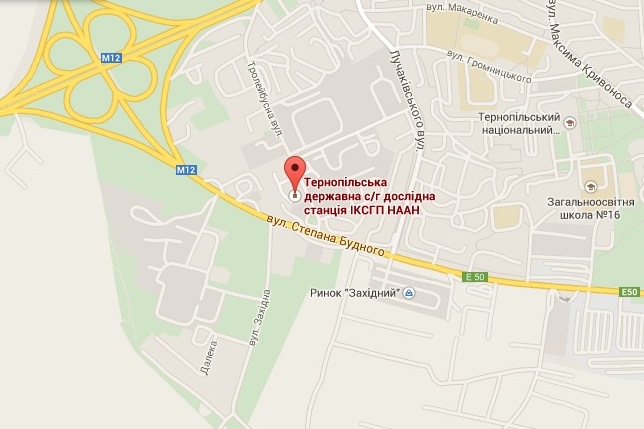| Головна » Статті » Конференція_2015_03_19-20 » Секція_1_Екологія_і_природокористування |
Savchenko Anatolii PhD student Marine Hydrophysical Institute of NAS of Ukraine Sevastopol
anomalies of surface temperature on territory of ukraine in the end of XXI century on model inmcm4
Climate change in the future may have a negative impact on many sectors of the economy due to the increased surface temperature of air for the end of the century. So many authors [1, 2] argue that the unprecedented largest positive trend surface temperature, observed since the mid XX century, largely due to the concentration of greenhouse gases in the atmosphere associated with human activities. Moreover, this warming will continue in this century, and for the end of the XXI century will be 2 – 5 ºC [3]. To assess future changes in Ukraine and the Black Sea region in the present study, we used a global model fourth generation INMCM4 [4], which is a cross-national comparison project of common global models Coupled Model Intercomparison Project Phase 5 (CMIP5) [5]. Climate model INMCM4 consists of two main parts – general circulation of the atmosphere and ocean. The spatial resolution in atmospheric module of model INMCM4 is 2 × 1,5°. To construct the projections of climate change approach used time interval (time-slice). Changes in climatic characteristics were calculated as the difference of values in the two periods of model for 30 years each. Model for future period (2071 – 2100) formulated based on changes in the concentration of greenhouse gases (CO2, CH4, N2O, O3) and sulfate aerosol according to one of the conventional scenarios of greenhouse gases – "adverse" scenario RCP8.5 [6]. Concentrations of control the period (1971 – 2000) were set according to the observations. Thus according to the model INMCM4 and scenario RCP8.5, at the end of the XXI century over the Black Sea basin in winter the average surface temperature will rise by 2 – 3 °C, and largest rising in northern Ukraine on 4,5 °C compared to the control period [7]. Upon reviewing the changes in average values interesting to see the change of temperature condition over the territory of Ukraine during extreme cooling of sea surface of the Black Sea. During these events the cold gusty wind invading from the north and is abnormal decrease in temperature over the whole territory of Ukraine. To construct the composite surface temperature anomalies of extreme events from the average for the selected period (control and future) used data turbulent heat fluxes (sensible + latent heat flux = total heat flux – Q). Total heat flux was used for sampling days with the largest values on the surface of the Black Sea in the winter time. Then days with largest values Q were used for build fields of surface temperature of air for territory of Europe. From the fields averaged surface temperature of winter extreme events P (Q) = 95% (or 5% of winter days with the highest values of total heat flux) of the future period was subtracted averaged fields of P(Q) = 95% of the control period. Thus obtained composite anomalies were calculated as difference between fields of extreme events future and control period. The resulting composite anomalies demonstrates maximize rising (by 7 – 8 °C) of the surface temperature in the region of the Dnieper River in the future period, both on the Ukrainian territory leakage, and the Republic of Belarus. That increase in the average temperature in winter is less than the increase during extreme events of cooling. The largest temperature anomalies during extreme events (P(Q) = 95%) in the future on this INMCM4 model (scenario RCP8.5) will be in the region of the flow of the Dnieper and will reach 8 °C. Average situation of the winter and composite anomalies calculated for the territory of Ukraine shows that extreme events in the future, when from Nordic countries and Russia will invade the cold mass in the Black Sea region, will be softer and warmer. Also calculated anomalies shows reduction period when the Dnieper was covered of ice. It is very important for the public and especially for freight traffic on the Dnieper River in the winter. Obtained data require further explore and validation.
References 1. Efimov V. V., Ivanov V. A., Anisimov А. Е. Numerical modeling of climate change in Ukraine in the XXI century. Reports of the National Academy of Sciences of Ukraine. 2011. No3. P. 100 – 107 (in Russian). 2. Rowell D.P. A scenario of European climate change for the late twenty-first century: seasonal means and interannual variability. Clim. Dyn. 2005. No25. P. 837–849. 3. Stocker Eds. T.F., Qin D., Plattner G.-K. et al. Climate Change 2013: The Physical Science Basis. Working Group I Contribution to the IPCC Fifth Assessment Report (AR5). Cambridge, United Kingdom and New York, NY, USA: Cambridge Univ. Press, 2013. 1535 P. 4. Volodin E. M., Dianskii N. A., Gusev A. V. Simulating Present Day Climate with the INMCM4.0 Coupled Model of the Atmospheric and Oceanic General Circulations. Izvestiya Atmospheric and Oceanic Physics. 2010. 46. No4. P. 448-466. 5. Taylor K.E., Stouffer R.J., Meehl G.A. An overview of CMIP5 and the experiment design. Bull. Amer. Met. Soc. 2012. 93. No4. P. 485 – 498. 6. Moss R.H., Edmonds J.A., Hibbard K.A. et al. The next generation of scenarios for climate change research and assessment. Nature. 2010. 463. P. 747 – 756. 7. Efimov V.V., Volodin E.M., Anisimov A.E. Modeling of the Black Sea area climate changes in the XXI century. Physical Oceanography. 2015 – in press. | |
| Категорія: Секція_1_Екологія_і_природокористування | Додав: Admin (18.03.2015) | |
| Переглядів: 454 |
| Всього коментарів: 0 | |



